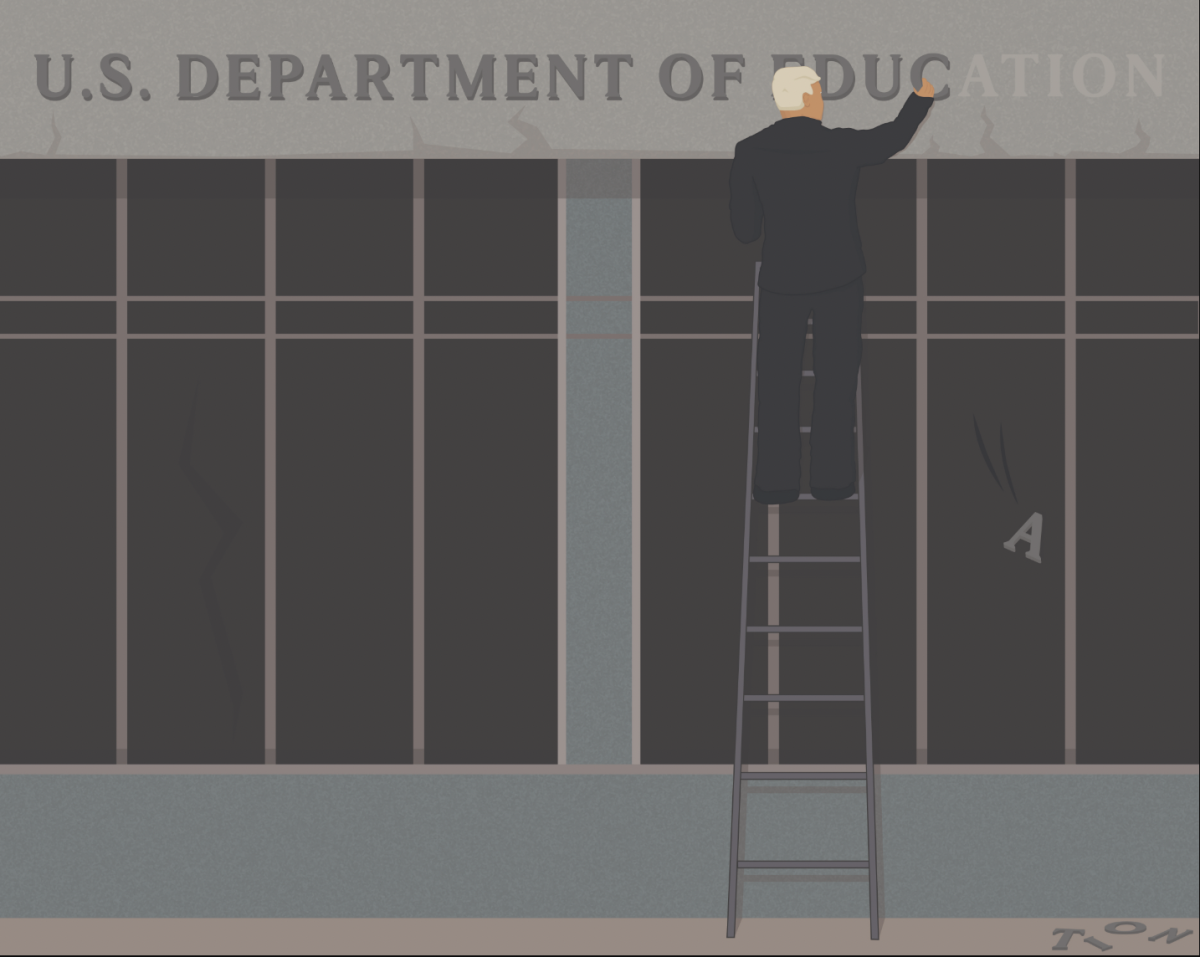Editor’s note: The author of this letter has requested to remain anonymous due to possible retaliation. Their identity has been verified by student editors in person.
Dear Editor,
Tuition costs are steadily rising. So, students may wonder how their tuition dollars are spent. Given that the university’s mission statement declares its “dedication to excellence and innovation in teaching, research, including creative expression, and service…” it would be natural to think that it prioritizes the salaries of those most responsible for this mission. It would be natural to assume that instructors’ pay reflects the advanced degrees they earned in order to land a position teaching at a university like Texas State. This would lead some to believe that their college instructors make substantially more than their high school teachers did.
Sadly, all of this is mistaken. As of 2018, about two thirds of all the teaching is done by people like me: non-tenure line (NTL) instructors, faculty members who are not eligible for tenure. We are part of an underclass in the ranks of university employees that are paid far less than tenure line faculty and have less confidence in our ongoing employment.
I write this letter anonymously because at the end of the academic year, the university could terminate my employment without cause, something they could never do to a tenure line faculty member. For example, many of us are paid thousands of dollars less than the average first year high school teacher in Texas, and without any scheduled salary increases that go with those teaching jobs. Nor is there any pathway for the promotion of NTL faculty to higher salary positions. To add insult to injury, our low salaries are not even protected against inflation. Some of the lowest paid lecturers are already living within a few thousand dollars of the poverty line. If steps are not taken soon to prioritize our salaries, then in a matter of years some could even fall below it.
You might think that we aren’t paid as much because we aren’t as qualified as the tenure line faculty. Yet, a large share of NTL faculty hired in the last decade have PhDs, meaning that we have received years of training after college to receive the highest degrees in our respective fields. Moreover, it’s not hard to find NTL faculty members who achieve more than their tenured colleagues on almost every measure of a professor’s performance. I have an NTL friend who teaches and researches at the level of his tenured colleagues. Moreover, he does so even while teaching extra courses to provide for his three young kids, and he lives only on his pay from the university while his wife is finishing her education. By the way, they don’t even get a professional discount on the tuition she pays to Texas State University.
As a result, he teaches almost twice as many courses as his tenured colleagues, for about half of the pay. Why does the university pay him so little? It’s certainly not because of the quality of his work. It’s just because they can. Universities around the country hand out many more PhDs than they used to and jobs at universities are harder to come by every year, so there are plenty of people like my friend lined up for universities to take advantage of.
The problem for students is this: as faculty salaries get lower and as their workload increases, the quality of teaching inevitably drops. The stress of making ends meet breaks the circuits that power our teaching. NTL faculty are even further demoralized when the university consistently treats us as some of the least valuable of its employees, even though we teach the lion’s share of course hours. The result is that student’s don’t learn as much or as well as they would from better supported faculty members. And this raises the worry that the university is betraying the very students whose tuition dollars fund it. From the university’s mission statement and recruiting materials, students are led to believe that Texas State University values quality teaching. From what I’ve said so far, its actions and words seem at odds.
So, if instructor salaries aren’t a guiding budget priority, then where are student tuition moneys going? Look around at all the construction work on campus: 20 million dollars this year are being spent on a new civil engineering program. 120 million dollars are being spent on Ingram hall, the new engineering building. More than 30 million dollars are going toward renovating a library that was already state of the art. Meanwhile, president Trauth has said that it is unlikely that the university can find the six million dollars for so-called “merit pool” increases that could help faculty salaries keep up with steadily increasing cost of living (e.g. more and more expensive housing in and around San Marcos). Six million dollars may sound like a large sum, but it’s a mere drop in a 725 million dollar bucket. And it’s nothing compared to current and planned facilities expenses.
Of course, there is nothing wrong with the university seeking to better itself. We are cramped for space as it is, and new buildings will relieve that pressure. Some of the funding for these building projects are earmarked for that purpose specifically. Moreover, many of these projects are aimed at becoming a top-tier research university, like UT, A&M and Rice, which will ultimately increase external funding to the university. My worry is that the pace and prioritization of these improvements may be at the expense of student interests. Judging from the administration’s actions, it feels like they are paying only lip service to the university’s mission. Supporting the faculty and prioritizing our pay seems so essential to that mission that it should be a basic operating cost, comparable to paying the university’s energy bill and keeping the lights on. After all, what good would it be to build new buildings and power them if there weren’t anybody teaching and conducting research in them? None. Whatsoever.
But this is not just about consistency with the university’s mission. Most of the university’s budget comes from students for the purpose of educating them. Consequently, the administration should explain the value, timing and necessity of these improvements to their primary stakeholders: their tuition-paying students, most of whom will still be paying off student loans decades from now. Will these exploits provide any real benefits to any of the student now shouldering the financial burden of these decisions? Must the building campaign be so aggressive that essential operating costs are neglected? Are cost of living salary increases (aka merit pool increases) really the only thing left to cut in order to balance the budget? I doubt it, and so should you.
The bottom line is this: if the university really is constructing new buildings and programs at the expense of supporting the faculty and improving student outcomes, it is betraying its mission and violating the trust of the students who pay for a quality education at Texas State. To me, it looks like that is exactly what is happening. What could restore my confidence in the administration? Showing real support for its faculty and prioritizing their well-being. If it fails to do so, students suffer. They are less likely to acquire the skills they need. As a result, they are less equipped to compete in a job market that is increasingly difficult to enter; less poised to be flexible in the face of a dynamic, global economy. We all lose out if quality education is given second place to growth.
Categories:
Letter to the Editor
October 30, 2018
0
Donate to The University Star
Your donation will support the student journalists of Texas State University. Your contribution will allow us to purchase equipment and cover our annual website hosting costs.
More to Discover











